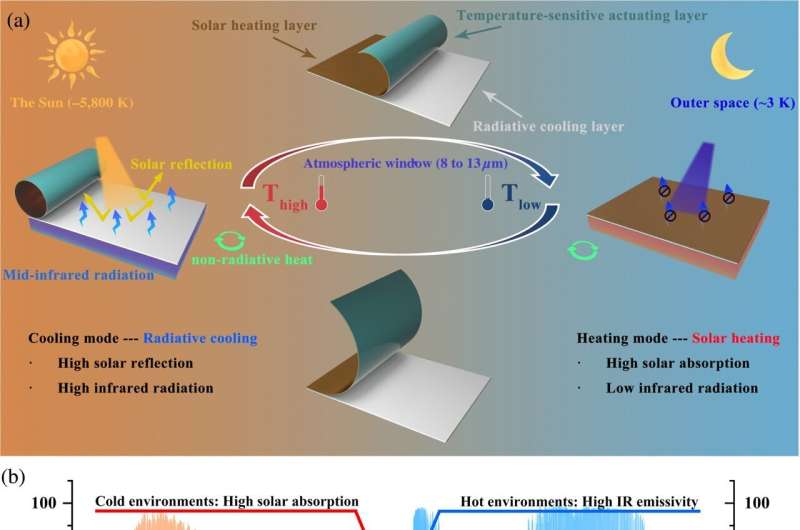This article has been reviewed according to Science X's editorial process and policies. Editors have highlighted the following attributes while ensuring the content's credibility:
fact-checked
trusted source
proofread
Balancing building temperatures sustainably with a device requiring no extra energy

Heating and cooling buildings currently accounts for a significant portion of global energy consumption, posing a challenge for reducing reliance on fossil fuels. By using less energy to heat and cool our buildings, we can take a big step towards sustainable building practices that help reduce or eliminate consumption of fossil fuels for heating and cooling.
In light of this challenge, a recent study from Wuhan University of Technology has introduced a practical innovation called the Zero-Energy Switchable Radiative Cooler (ZESRC). The ZESRC is a device designed to keep buildings at the right temperature without using any extra energy. It works by using a special method based on how different materials expand as they are heated. This straightforward principle allows it to easily switch between cooling and heating modes, to minimize energy use while maintaining comfortable indoor conditions.
The paper is published in the Journal of Photonics for Energy.
Field experiments demonstrate the ZESRC's effectiveness across seasons, with notable temperature reductions of up to 7.1° C in summer and increases of up to 7.5° C in winter compared to outdoor conditions.
In addition to designing, building, and testing the ZESRC, the researchers also made a map to show how efficiently the ZESRC functions in different climates. Compared to other devices that only use solar heating or cooling, the ZESRC managed to reduce building energy consumption by 14.3%. That's a big deal because energy conservation means we can significantly reduce our carbon footprint.
Going forward, the research team aims to optimize the ZESRC design for improved performance and test its application across different global climates and buildings. They hope that as a practical and energy-efficient solution for indoor climate control, the ZESRC could play a crucial role in helping to reach the global goal of bringing energy-related carbon dioxide emissions to net zero by 2050.
More information: Changhao Chen et al, Zero-energy switchable radiative cooler for enhanced building energy efficiency, Journal of Photonics for Energy (2024). DOI: 10.1117/1.JPE.14.028501

















